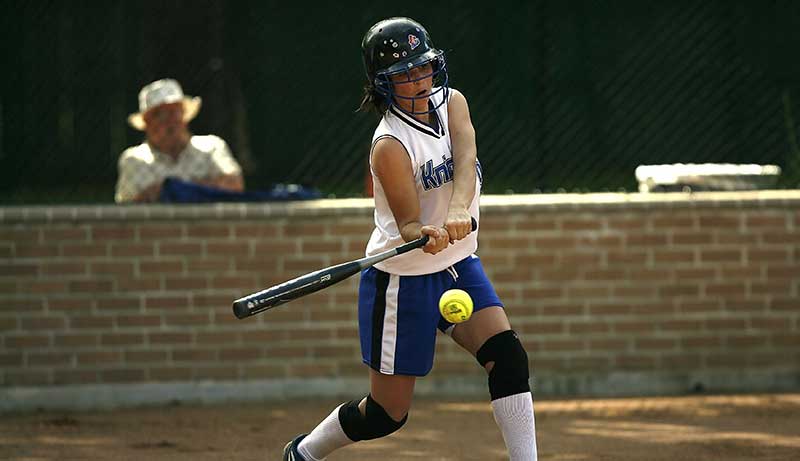Behind every seasoned professional lies a journey as a beginner.
If your child dreams of becoming the next Alex Rodriguez, it’s crucial to guide them properly.
Instructing a child on the art of hitting a baseball is no simple feat. Even if baseball isn’t their chosen sport, understanding the fundamentals of batting is a valuable skill you can impart.
Being a proficient mentor involves knowing how to effectively teach a child to hit a baseball. Beyond shaping them into a potential pro, proper guidance can significantly boost your child’s confidence.
Ready to pass on the skill of hitting a ball with power to your youngster? Let’s get started.
Step By Step Guideline on How To Teach A Kid To Hit A Baseball

1. Selecting the Right Bat
Providing your child with a full-size bat won’t magically transform them into a professional player. Opt for a lighter, smaller bat instead, as it is more suitable for young players. Determining the correct size is a quick process—simply conduct a basic arm test to find the right fit.
Ask your child to hold a bat and maintain an extended arm; if they can do so for about 30 seconds without losing balance, it’s a suitable choice. Ensure the bat adheres to the USA Baseball Bat Guideline.
2. Maintaining a Firm Grip
The key to a successful batting swing lies in a firm grip, allowing the batter to generate more force when hitting the ball. Teach your child to hold the bat snugly without being overly tight. The dominant hand dictates the grip: for left-handed players, the right hand goes below the left, and for right-handed players, it’s the opposite.
Following this simple hand positioning rule ensures a proper grip, and aligning the knuckles enables better ball contact. Encourage your child to adopt a comfortable grip if they are not at ease with the suggested technique.
3. Focus on Movement
Mobility is paramount in baseball, determining the success of a player. Instruct your child not to release their hands before a swing, as premature hand movement can significantly slow down their response time.
This practice is crucial, especially when facing slower pitches, preventing potential setbacks during a game.
4. Enhance Balance
Balancing is a critical aspect of successful hitting. Whether your child adopts a specific gripping technique or stance, the ability to swing the bat while maintaining balance is essential. Focus on both the upper and lower body parts to improve overall balance.
Emphasize that only the upper body should move during a swing. This ensures that the muscles in the upper body are effectively engaged when making contact with the ball.
5. Develop Precision in Hitting
Once your child has gained control over their body and movement, it’s time to tackle the primary challenge: striking the ball. Presumably, you’ve already introduced basic hitting techniques. To further hone these skills, encourage your child to practice hitting on a simple batting tee.
The primary goal at this stage is accuracy, with the aim of achieving a minimum success rate of 90%. Speed is not a crucial factor at this point. As your child refines their striking technique, speed can be gradually introduced. The key is ensuring that your child can swing the bat correctly and with the necessary precision to become a skilled player.
6. Transition to Soft Ball Practice
Once your child has mastered the art of hitting, it’s time to introduce a challenge by incorporating softballs into the practice routine, with a tennis ball being a suitable starting point.
Consider the pace at which the ball is thrown as an essential aspect of teaching baseball. While practicing with faster balls helps develop striking techniques, it also raises the risk of injury. Accidentally being hit by a faster ball during practice can cause physical harm and dampen your child’s enthusiasm for the game.
To mitigate this risk, softballs are favored during practice sessions. It’s not necessary for your child to exclusively practice with softballs; they can transition to real baseballs once they consistently hit about 90% of their throws.
Baseball Safety Guidelines for Your Child
According to a study from Stanford Children’s Health Hospital, approximately 110,000 kids seek medical care for baseball-related injuries, with around 62% occurring during practice sessions. Ensuring your child’s safety is paramount, alongside teaching them baseball skills. Here are essential safety tips for budding baseball players:
- Batting Helmets:
- Always wear a batting helmet when at bat or waiting to bat.
- Verify that the baseball helmet complies with NOCSAE standards for safety.
- Catcher’s Safety Equipment:
- Catchers must wear a facemask, chest protection, helmet, throat guard, and other necessary safety gear.
- Warm-up and Stretching:
- Ensure your child warms up and stretches their muscles before starting any practice or game.
- First Aid Preparedness:
- Keep a first aid kit readily available at all times for prompt response to any injuries.
- Footwear Considerations:
- Replace metal cleats on baseball spikes with plastic ones, as many youth baseball leagues prohibit metal cleats.
- Hydration:
- Encourage regular hydration by having a water bottle accessible during practices and games.
Parents, pay careful attention to these safety tips to ensure the well-being of your young baseball enthusiasts. Your vigilance is crucial for their enjoyment and safety on the field!
Closing Thoughts
Witnessing the joyous sight of children playing basketball on the field is truly delightful. However, an equally significant responsibility lies in imparting the skills of the game to these young athletes. Ensuring that your budding player not only receives instruction but also relishes the art of striking the ball is paramount.
Fortunately, your challenges in teaching a child to hit a baseball effectively can be significantly alleviated with the right approach.
Hit it out of the park, superstar!





Leave a Reply